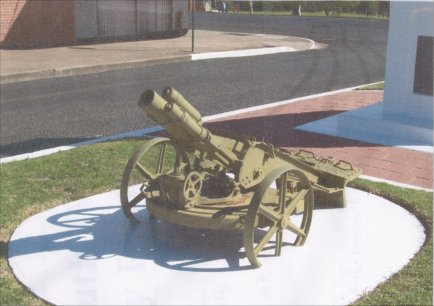
ARTILLERY REGISTER |
|||||||||||||||||||||||
|
|
||||||||||||||||||||||
| Historical Specifics: | The light mortar on low trajectory carriage was captured by the 17th battalion 1st AIF at Broodseinde on 3 November 1917 and allotted to Werris Creek. The wheels are not original.
Of all the members in the Minenwerfer family, the light 7.5cm version was the least spectacular but at the same time the most important. It was used everywhere, and was the weapon that supported the German Infantry in all situations, especially during trench fighting, when traditional flat trajectory weapons often were at an disadvantage. When the war started, the light Minenwerfer (Mine thrower) existed only in prototype form. By 1916, trials and battle experience had resulted in the construction of a new type of Light Minenwerfer, the LMW n.A. (neuer Art, new type). This had a bedding that was circular at the front and square at the back, and had also a traverse plate, making it possible to move the piece 360 degrees around. Like the earlier type, it could be fitted with wheels, and be carried by special poles or simply dragged by men equipped with a special harness. Work on improving the piece continued, resulting in 1917 in a new variant of the n.A this had a tail, very much like a standard artillery piece, only smaller, and a modified carriage, which made it possible to fire it in flat trajectory mode, for example against tanks. It was a good improvement, but it led to an increase in weight: a gun with wheels had a weight of some 258 kilos. (The maximum flat trajectory range was some 1.200 meters, given an elevation of 27 degrees.) It was a successful weapon, and at the end of the hostilities, more than 10,000 lMW:s were in service. |
||||||||||||||||||||||
| General Information on Gun Type: | |||||||||||||||||||||||
| Additional Photos: |
|
||||||||||||||||||||||
